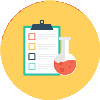Introduction:
Are you preparing for a Salesforce Developer interview? As one of the most popular and in-demand CRM platforms, Salesforce offers exciting career opportunities for developers. To help you ace your interview, we have compiled a list of the top 50 frequently asked interview questions for Salesforce Developers. These questions cover a wide range of topics and will give you a solid foundation to showcase your Salesforce skills and expertise. Let's dive in!
Salesforce Basics:
1. What is Salesforce and what are its key features?
Salesforce is a cloud-based CRM platform that helps businesses manage customer relationships, sales, and marketing. Its key features include lead management, opportunity management, workflow automation, reporting and analytics, and customization options.
2. Differentiate between a Salesforce object and a field.
In Salesforce, an object represents a database table that stores a specific type of data (e.g., Account, Contact). A field, on the other hand, represents a column within an object that stores a particular piece of information (e.g., Name, Email).
3. What are validation rules in Salesforce?
Validation rules are used to enforce data quality and accuracy by defining specific criteria that data must meet before it can be saved. They help maintain data integrity by preventing users from entering invalid or inconsistent data.
4. Explain the difference between a role and a profile.
A role in Salesforce defines the hierarchy and access levels within an organization. It determines a user's visibility to records owned by users below them in the role hierarchy. On the other hand, a profile defines the permissions and settings that control a user's access to different objects, fields, and features within Salesforce.
5. What is the significance of the "View All Data" permission?
The "View All Data" permission grants a user unrestricted access to view all records in the organization, regardless of ownership or sharing rules. It should be assigned carefully and only to users who require such broad access for their roles.
6. How can you enable field-level security in Salesforce?
Field-level security allows you to control the visibility and accessibility of individual fields on an object basis. It can be enabled by adjusting the field-level security settings within the object's configuration.
Apex Development:
7. What is Apex? How does it relate to Salesforce?
Apex is a programming language developed by Salesforce specifically for building custom functionality and business logic within the Salesforce platform. It is similar to Java and follows a similar syntax. Apex code can be executed on the Salesforce servers, providing powerful customization options.
8. How are triggers different from workflows and process builders?
Triggers are pieces of Apex code that are executed before or after specific events, such as record insertion, update, or deletion. They allow for complex data manipulation and can perform operations that workflows and process builders cannot.
9. Describe the execution order of triggers in Salesforce.
In Salesforce, triggers are executed in a specific order. Before triggers are executed first, followed by the system validation phase, after triggers, and then the user-defined validation phase. Finally, the record is saved to the database.
10. What is an Apex class? How do you define and use it?
An Apex class is a blueprint for creating objects that define methods and variables. It is used to define custom functionality and business logic in Salesforce. Classes are defined using the "class" keyword and can be instantiated to create objects that can be used throughout the application.
11. How can you handle exceptions in Apex?
Exceptions in Apex are handled using try-catch blocks. You enclose the code that might throw an exception within a try block, and if an exception occurs, it is caught in the catch block. You can then handle the exception appropriately, such as displaying an error message or performing specific actions.
12. What are Governor Limits in Salesforce?
Governor Limits are Salesforce's way of ensuring the efficient use of resources and maintaining the stability and performance of the multi-tenant environment. They are limits imposed on various aspects of Apex code, such as CPU time, database queries, and heap size, to prevent abuse and ensure fair resource allocation.
Visualforce:
13. What is Visualforce and how does it work with Salesforce?
Visualforce is a markup language used to create custom user interfaces for Salesforce. It allows developers to define the layout, components, and behavior of pages rendered in Salesforce. Visualforce pages can include Apex code and interact with the underlying data model.
14. Explain the difference between Visualforce and Lightning components.
Visualforce is an older technology in Salesforce used to create custom UI pages. Lightning components, on the other hand, are a more modern and flexible framework that uses the Lightning Design System. Lightning components provide better performance, reusability, and a more responsive user experience.
15. How do you include a Visualforce page in a standard page layout?
To include a Visualforce page in a standard page layout, you can use the Visualforce component called "apex:detail." This component allows you to embed a Visualforce page within a standard page layout, providing additional custom functionality.
16. What are the different types of controllers in Visualforce?
There are three types of controllers in Visualforce: standard controllers, custom controllers, and controller extensions. Standard controllers provide basic functionality for standard Salesforce objects, custom controllers are Apex classes specifically created for a Visualforce page, and controller extensions are used to extend the functionality of standard or custom controllers.
17. Can you explain how Visualforce rerendering works?
Visualforce rerendering allows you to refresh specific parts of a page without reloading the entire page. By using the "rerender" attribute on components or regions, you can specify which sections of the page should be updated when an action occurs, such as a button click or an AJAX call.
SOQL and SOSL:
18. What is SOQL (Salesforce Object Query Language)?
SOQL is a query language used to retrieve records from the Salesforce database. It is similar to SQL (Structured Query Language) but is specifically designed for querying Salesforce objects and their relationships.
19. Explain the difference between SOQL and SOSL.
SOQL is used to query individual objects and their related records. It allows you to retrieve specific fields and filter records based on conditions. SOSL (Salesforce Object Search Language), on the other hand, is used to perform text-based searches across multiple objects simultaneously.
20. How do you use SOQL for data retrieval?
To use SOQL for data retrieval, you construct a query using the SELECT statement and specify the fields you want to retrieve, the object you are querying, and any conditions or filters you want to apply. The query is executed, and the resulting records are returned.
21. What are bind variables in SOQL?
Bind variables in SOQL are used to dynamically pass values into a query at runtime. They are denoted by a colon (":") followed by a variable name and allow you to build dynamic queries and prevent SQL injection vulnerabilities.
22. How can you prevent SOQL injection?
To prevent SOQL injection, it is recommended to use bind variables instead of concatenating values directly into the query string. Bind variables automatically handle escaping and sanitization, ensuring that user input is treated as data and not executable code.
Data Management:
23. Describe the different ways to import data into Salesforce.
There are several ways to import data into Salesforce:
- Data Import Wizard: A web-based tool that allows for simple data imports from CSV files.
- Data Loader: A client application that supports large data volumes and offers more advanced features like data mapping and automation.
- API Integration: You
can use Salesforce APIs, such as the SOAP or REST API, to programmatically import data from external systems.
24. How do you export data from Salesforce?
Data export from Salesforce can be done using the Data Export feature. This feature allows you to export data in a variety of formats, such as CSV or Excel, and includes standard and custom objects.
25. Explain the difference between a Lookup relationship and a Master-Detail relationship.
In Salesforce, a Lookup relationship allows you to associate two objects together, but the child record can exist without the parent record. In contrast, a Master-Detail relationship is a strict parent-child relationship where the child record cannot exist without the presence of the parent record.
26. What is the data import wizard in Salesforce?
The Data Import Wizard is a web-based tool provided by Salesforce that simplifies the process of importing data from CSV files into Salesforce. It guides users through the import process, allowing them to map fields, validate data, and review the import results.
Integration:
27. What is Salesforce integration and why is it important?
Salesforce integration involves connecting Salesforce with other systems or applications to enable seamless data flow and business process automation. Integration is important as it allows organizations to leverage existing data, streamline operations, and provide a unified view of customer information.
28. Explain the difference between inbound and outbound web services.
Inbound web services are used to expose Salesforce functionality to external systems. They allow external systems to invoke methods within Salesforce and perform operations. Outbound web services, on the other hand, are used to send data from Salesforce to external systems by making HTTP requests.
29. How can you integrate Salesforce with external systems?
Salesforce provides various integration mechanisms, including APIs (such as SOAP and REST), outbound messaging, Apex callouts, and middleware platforms like MuleSoft and Informatica. Integration can be achieved by leveraging these technologies based on the specific requirements of the integration scenario.
30. What are Salesforce Connect and External Objects?
Salesforce Connect is a feature that allows you to integrate external data sources with Salesforce without actually storing the data in Salesforce. External Objects represent data from external systems and are accessed in real-time through Salesforce Connect. They provide a seamless integration experience while keeping data storage external.
Lightning Web Components:
31. What are Lightning Web Components (LWC)?
Lightning Web Components (LWC) is a modern framework for building web components on the Salesforce platform. LWC provides a standards-based approach to component development, making it easier to build reusable, performant, and secure UI components.
32. How do Lightning Web Components differ from Aura components?
Lightning Web Components (LWC) are a newer framework compared to Aura components. LWC follows the Web Components standard, while Aura components have their own proprietary framework. LWC provides better performance, improved developer productivity, and a more intuitive programming model.
33. What is the lifecycle of a Lightning Web Component?
The lifecycle of a Lightning Web Component consists of several phases: creation, rendering, updating, and destruction. During each phase, different lifecycle hooks are available to perform custom logic, such as initialization, data manipulation, and cleanup.
34. Explain the concept of data binding in LWC.
Data binding in Lightning Web Components allows you to establish a relationship between the component's JavaScript code and its HTML template. By binding data, changes in the component's JavaScript properties automatically reflect in the corresponding HTML elements, and vice versa.
35. How can you communicate between Lightning Web Components?
Lightning Web Components support various mechanisms for inter-component communication, including component events, parent-child component communication, and the Lightning Message Service. These mechanisms allow components to communicate and exchange data effectively.
Salesforce Security:
36. What are the different levels of access control in Salesforce?
Salesforce provides several levels of access control:
- Organization-Wide Defaults: Control the default access levels for objects.
- Profiles: Define the permissions and settings for individual users or groups.
- Roles and Role Hierarchy: Control record-level access and data visibility.
- Sharing Rules: Extend access beyond the role hierarchy for specific records.
- Permission Sets: Grant additional permissions to users beyond their profile settings.
37. Explain the purpose of sharing rules and permission sets.
Sharing rules are used to extend access to records for users who do not have access through the role hierarchy. They allow you to define criteria-based rules to share specific records with specified users or groups. Permission sets, on the other hand, grant additional permissions and access settings to individual users, irrespective of their profile settings.
38. How do you enable field history tracking in Salesforce?
To enable field history tracking in Salesforce, you need to go to the object's configuration settings, enable the field history tracking for the desired fields, and define the history retention period. Once enabled, Salesforce will track and store the historical values of those fields whenever they are changed.
39. What is the significance of the "Modify All Data" permission?
The "Modify All Data" permission is a powerful permission that allows a user to modify any record in the Salesforce organization, regardless of ownership or sharing rules. This permission should be assigned with caution, as it grants broad access to sensitive data and can potentially lead to data integrity issues if misused.
Salesforce Deployment:
40. What are the different ways to deploy code in Salesforce?
Salesforce provides several methods for deploying code:
- Change Sets: A point-and-click tool for deploying customizations between environments.
- Salesforce CLI: Command-line interface for deploying code using package.xml or source format.
- Metadata API: SOAP-based API for deploying metadata components.
- Salesforce Extensions for Visual Studio Code: An IDE extension that simplifies code deployment and management.
41. How does change set deployment work?
Change set deployment involves creating a change set in the source org, adding the desired components, uploading the change set to a target org, and deploying the components. The target org can review and validate the changes before deploying them to production.
42. Explain the purpose of the Salesforce Metadata API.
The Salesforce Metadata API allows developers to retrieve, deploy, create, update, and delete metadata components programmatically. It provides a powerful mechanism to automate and manage changes to customizations and configurations in Salesforce.
43. What is the difference between a Sandbox and a Production environment?
A Sandbox is a copy of a Salesforce production environment used for development, testing, and training purposes. It allows developers to build and test changes without affecting the live production data. The Production environment is the live, operational instance of Salesforce that is used by end-users and customers.
44. How do you perform continuous integration in Salesforce?
Continuous integration in Salesforce involves automating the process of building, testing, and deploying code changes to Salesforce environments. It typically involves using version control systems, build tools, and deployment automation tools to ensure a smooth and efficient development workflow.
Salesforce Lightning Experience:
45. What is Salesforce Lightning Experience?
Salesforce Lightning Experience is a modern and intuitive user interface (UI) introduced by Salesforce. It provides a refreshed look and feel, enhanced productivity features, and a more responsive and customizable user experience compared to the older Salesforce Classic UI.
46. Explain the difference between Lightning Experience and Salesforce Classic.
Salesforce Lightning Experience and Salesforce Classic are two different user interfaces. Lightning Experience offers a more modern and responsive UI, better performance, and more features compared to Salesforce Classic. It also provides better integration with Lightning components and features, while Classic supports older features and customizations.
47. How can you customize the Lightning Experience user interface?
The Lightning Experience UI can be customized using various tools and features, such as App Builder, Lightning App Builder, Lightning Components
, and the Salesforce Lightning Design System. These tools allow you to create custom pages, components, and apps to tailor the user interface to specific business needs.
Miscellaneous:
48. What is the Salesforce AppExchange?
The Salesforce AppExchange is an online marketplace for Salesforce applications and components. It offers a wide range of pre-built solutions, integrations, and extensions that can be installed and used within Salesforce to enhance its functionality and meet specific business requirements.
49. How do you handle data migration and data quality in Salesforce projects?
Data migration in Salesforce involves planning and executing the transfer of data from legacy systems or other sources into Salesforce. Data quality is crucial, and it is essential to clean and validate data before migration. This can be done using data profiling, data cleansing tools, and validation rules in Salesforce.
50. How do you stay updated with the latest Salesforce features and releases?
To stay updated with the latest Salesforce features and releases, you can:
- Follow official Salesforce blogs and social media channels.
- Join Salesforce user groups and community events.
- Attend Salesforce webinars and training sessions.
- Explore Trailhead, Salesforce's interactive learning platform.
- Engage with the Salesforce developer community and forums.
Conclusion:
These 50 frequently asked interview questions cover a wide range of topics that Salesforce Developers commonly encounter during interviews. By preparing and practicing your responses to these questions, you'll be well-prepared to showcase your knowledge and skills during the interview process. Remember to understand the concepts behind the questions and provide clear and concise answers. Best of luck with your Salesforce Developer interview!






















0 Comments